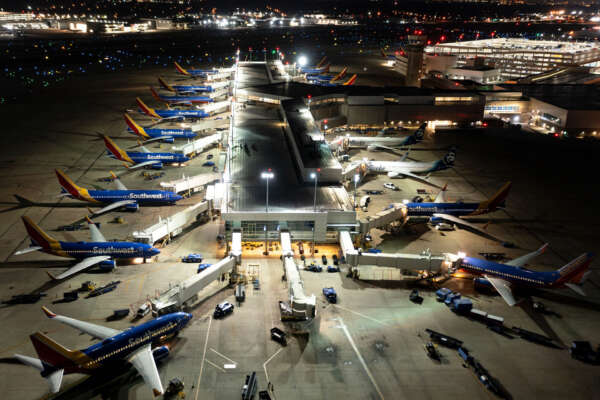Proactive security planning for airport construction projects

The National Safe Skies Alliance manages the Program for Applied Research in Airport Security (PARAS), an industry-driven applied research program focused on defining practical ways to improve security at airports. Multiple research studies are completed and released to the industry each year on a range of airport security related topics. Funded by the FAA’s Airport Improvement Program (AIP), these applied research papers provide near-term and actionable guidance to the industry.
For the most recent PARAS publication, Garver’s Aviation Planning Team, led by Aviation Planning Leader Nathan Polsgrove, A.A.E., IAP, ACE; Aviation Planning Director Tim O’Krongley, A.A.E., IAP, IACE; and Aviation Planner Neil Gabrielson, A.A.E., ACE, PMP; along with Dr. Richard Ham of the University of Arkansas, assembled a report titled “Planning and Operational Security Guidance for Construction Projects at Airports.” It deals with construction security at airports – specifically, the process of integrating security requirements and practices effectively during the life cycle of a construction project.
In this IQ&A, Garver’s series of conversations with leading experts delivering value to communities across the country, Polsgrove discussed the Garver-led report and how it can impact the efficiency of airport construction projects.
What type of research went into assembling the report?
Over the course of six months, we conducted a detailed literature review, multiple case study reviews, technology reviews, and also a series of focus groups and listening sessions with a wide range of stakeholders in the world of airport security – contractors, contract security providers, architects/engineers, airports of varying sizes, TSA, and so forth – about their challenges, lessons learned, and best practices with respect to airport security and construction.
Why is an effective security plan important for completed construction plans?
At airports, security is really part of almost every project. You're working in an environment that has unique security requirements and a unique set of security stakeholders in many circumstances – from your own law enforcement/security personnel located at the airport to Transportation Security Administration (TSA); you have U.S. Customs and Border Protection sometimes at the airport as well. The Federal Bureau of Investigation (FBI) and Federal Protective Services (FPS) are sometimes involved. Additionally, some airports also hire contract security providers to support various security functions. So, you have a unique array of stakeholders and needs to be considered in the life of your construction project. And so, effective security planning as part of the construction effort really helps ensure its effective completion, because many times security events, incidents or vulnerabilities can be things that can delay projects, or can result in challenges or items that pop up that have to be addressed.
How is this different from current protocols?
What the research really showed is that there is a strong cultural aspect to effective security. Many times, it’s easy to think of security mainly in a compliance frame of mind. I think a lot of times we think of it as, “Here’s the set of rules that we have to abide by from a security perspective.” And so, our thought is, “How do we comply with those?” However, what the research identified is that it is important for airports to cultivate a proactive culture of security where you’re not just focused on compliance, but on prevention, too.
For example, instead of focusing on “How do we catch security issues?” We need to focus on, “How do we prevent security issues from ever occurring?” And part of that is really having that culture that embraces security and prizes it. It’s not something that we have to do for compliance, it’s something that we need to do, and how do we make sure that it’s integrated effectively?
How can this research benefit airports and other stakeholders?
I think this really arms us with an excellent understanding of the diverse needs of security stakeholders in the airport environment. You know, from the contractors’ perspective, the regulators’ perspective – meaning TSA – the airport operators’ perspective, and then other security stakeholders like U.S. Customs and Border Protection and the unique interests each stakeholder brings to a project. Because we have a solid understanding of those perspectives, we're well equipped as an organization to help airports navigate and manage those diverse stakeholder interests and needs as part of a project. We can help ask the questions and facilitate the meetings to make sure that effective planning is done on the front end of the project, so you have a smoother management of the project from beginning to end.
Do security measures and plans need to be complex to be effective?
No. A key finding of the research was the importance of simplicity related to security. Sometimes, when we think about security, we think that the more complex that security is, the more foolproof it will be. And something that really came out as a strong theme throughout the research was the importance of keeping policies and practices easy to understand.
And the reason for that was that most of the noncompliance we saw in security wasn’t people trying to circumvent the system – there’s obviously some of that – but a lot of it is just people not understanding the requirement or not understanding how it applies. So, being very simple and straightforward in working with your stakeholders related to security and developing security policies was really the best approach to helping ensure or facilitate an environment that encourages compliance.
To learn more about how Garver’s Aviation Planning Team can help with an effective project security plan, contact Nathan below.









Share this article